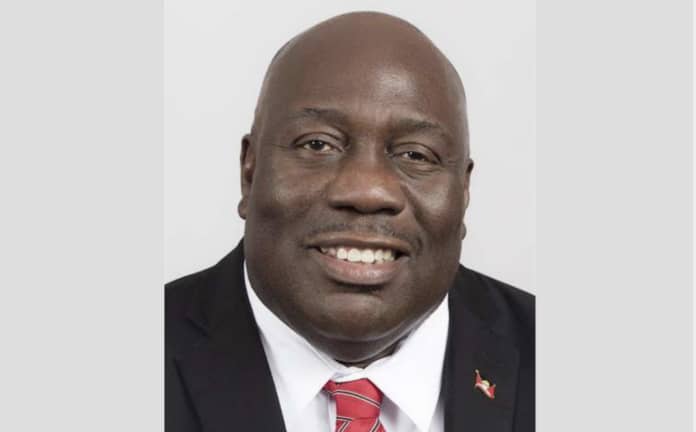
BY LENNOX WESTON
West Indies batting woes continue in all formats of the game in Test, One Days and T20 cricket. In a previous article I demonstrated that in Test Cricket our batsmen need the experience of playing a lot more first class cricket in a professional coaching setting, day in day out developing and sharpening their craft, their technique, concentration and stamina, in conditions similar to the English county experience that our cricket greats benefitted from in the past.
With the English County game no longer available to West Indian cricketers, utilising many more A Team tours and under nineteen tours would be necessary to provide the experience essential in developing the quality batsmanship required to be consistent at the test level, averaging over 40 runs per innings, the minimum standard to be a quality test batsman. All West Indies great batsmen in the past had hundreds of first-class games under their belts in various conditions playing competitive first-class cricket more than nine months every year.
Very few if any current cricketers have dreams of putting in the hard work, playing hundreds of first class cricket matches, playing nine long months every year for comparatively modest renumeration when compared to a six week IPL contract or a three week T20 contract in one out of the several lucrative T20 Franchises, which can transform their bank accounts into United States Dollar millionaires after two or three seasons.
It is this disparity in earning potential between playing Tests matches and T20 cricket matches that provides the irresistible incentive for all West Indian batters basing their batsmanship skills on scoring at over 170 and averaging a mere thirty runs per innings to attract and secure various lucrative T20 Franchise contracts.
Most West Indian batters are only interested in perfecting their skills of hitting every ball over the boundary and averaging thirty runs per innings with a run rate of over 170. This is what the T20 market requires this is the pathway to financial independence and millionaire status in two or three years.
When we played cricket in the 70s and 80s batsmen who whoofed or swiped were not highly regarded. In fact, been call a whoofer or swiper, was a pejorative term, simply because this high-risk batting style would only allow the batsmen whoofing to survive a few overs.
In todays lucrative T20 Franchise cricket incentive environment whoofing or swiping is premium batsmanship. So, we see West Indian batsmen swiping across the line, backing away on a perfectly pitched ball, trying to cut off centre stump, going aerial trying to clear fielders on the boundary line. Six hitting is a premium so why rotate the strike pushing for a single, when an IPL contract is given to West Indian batsmen who are Finishers, six hitters, requiring them to bat ten or fifteen balls to win the Game.
The former USA President Clinton had a famous quote; It is the economy stupid. So, yes blaming the current West Indian batting woes on the President, lack of ICC equitable funding, lack of adequate training facility, picking the wrong players, is a natural reaction but West Indian supporters and administrators and coaches simply must understand the power of the T20 Franchise cricket market and the skill set that will earn players millions of dollars.
It is the millions that T20 Franchise cricket offer stupid that has transformed every West Indian batter into an aspiring Whoofer, a Swiper seeking to become the next West Indian Batting Finisher, rolling in Millions of United States dollars from multiple T20 Franchise contracts. This is what drives current West Indian batters, they have little interest in anything else.
Can the incentive regime be adjusted to make test batting more lucrative? We hear the lack of adequate ICC funding makes it impossible. Can an individualised performance based premium payment regime in test cricket work because it would be less expensive than increasing payment for all test cricketer contracts? Paying high premiums for scores over fifty runs even higher ones for centuries and batting averages over forty runs per innings with matching amounts for bowlers taking four wickets or more and for catching could this work to narrow the gap in test cricket earnings compared to T20 Franchise cricket.
Can guaranteed training scholarships be offered to past Test Cricketers to transition them into coaching, broadcasting, umpiring physical training or technical and or academic post cricket careers be another incentive for test cricketers.
Can a good pension plan for Test Cricketers be another incentive to attract dedicated high performing test cricketers. Can Guaranteed government appointment and employment provide another incentive for test cricketers who must look after their families when they retire.
Unless the disparity in payment is resolved, West Indian batsmen will continue to focus only on T20 cricket batting skills. Test cricket requires a different mentality, and different skill sets and the hard work of playing hundreds of First-class games to perfect their craft as top quality batsmen.
Sadly, West Indian approach to T20 cricket is even destroying the batting ability of T 20 West Indian players. Going hard from ball one reenforcing the IPL designation of West Indian batters as six hitters, Finishers and the players own desire to do something spectacular to secure the lucrative IPL contract have created a generation of whoofers and swipers in West Indian T20 batting.
The millions of dollars earned, and wealthy lifestyle of successful West Indian IPL professionals have created a batting frenzy of swiping and whoofing from current and young west Indian T20 batsmen seeking to be the next IPL T20 player. Making it even more difficult for these players to transition into a genuine test cricket player.
Can the T20 Head Coach develop a different batting strategy with a run scoring model that would cut out the reckless whoofing and swiping and still allow batsmen to secure the lucrative T20 contracts they so desperately desire.
For example, can the Head Coach say to his openers he needs eight runs per over in the first six overs with one four one twos and two singles. Can the Head Coach demand the open batsmen bat normally for the first six overs no whoofing, swiping, scoops, charging, backing away but simply playing good cricketing shots avoiding the reckless high risk whoofing and swiping batting we see presently.
Can the Head Coach say to his batsmen from overs seven to fourteen he wants a scoring rate of ten with two fours and two singles, and from overs fifteen to twenty the Finishers can take over by what ever means necessary pushing for fifteen or more runs per over.
In other words, setting a precise plan targeting T20 scores of 215 per innings but with less risk and greater consistency from the batters removing the reckless swiping mentality, trying to hit only sixes and dazzle with high risk shot making, at least for the first fourteen overs.
The Head Coach could set an acceptable batting scoring rate from the openers of about 124 for the first six overs upping it to a scoring rate of 160 from overs seven to fourteen and to scoring rate of 280 from overs fifteen to twenty.
Going Hard from ball one turning every T20 Batter into a finisher emphasising only six hitting will only lead to the swiping, whoofing and reckless batting we currently see leading to inconsistent performance by the batters.
Starting off at scoring rate of 124 but increasing to over 160 with greater runs scoring consistency will still allow West Indian batters to secure lucrative T20 Franchise deals. The Finishers are expected to bat only ten to fifteen balls as they engaged in going hard at every ball with high risk six hitting in the last six overs of the match. Surely this is not we want from all T20 batsmen.
Batsmen must be given detail scoring guidelines that they can follow knowing their place in the T20 side would not be in jeopardy if they do not score at rates that are only required from Finishers.
The West Indian batsmen have the talent to match the performance required for successful Test careers and consistent T 20 cricket performance. They simply need a different strategy and an adjusted incentive regime.
Administrators and Coaches must understand the incentive regime that drives current cricketers, and their style of play, skill development, training focus, and player mentality is T20 franchise cricket remuneration.
Only by closing the gap between Test Cricket remuneration and Franchise T20 remuneration whether through special performance incentive pay or by guaranteed post retirement career transition support or a pension plan will make cricketers adjust their focus on developing the cricketing skill and temperament to becoming a consistent high quality Test batsman.
In T20 cricket, a different batting strategy is required with detailed batting runs scoring plan developed that cuts out the whoofing and swiping but a plan that still allows batsmen to secure T20 Franchise contracts and secure their family financial future.
Advertise with the mоѕt vіѕіtеd nеwѕ ѕіtе іn Antigua!
We offer fully customizable and flexible digital marketing packages.
Contact us at [email protected]


















Except the west indies batting has been poor since around the year 2000, Long before the IPL started
Cricket today is much more than just fame. Sir Viv, Sir Andy, Sir Richie, Sir Curtley and all our greats have name recognition and fame but no money. There’s life at the end of their playing days and so the more recent crop of players cares less about loyalty to country and more about ensuring that they can ably take care of their families when their cricketing days are over. It is really up to the cricketing nations to create contracts and initiatives that are lucrative and can favourable compete with the IPL and others in order to retain our best players. Until that happens, players would always gravitate to where the grass is greener. They can’t take loyalty to country to the supermarket. We have to recognize and be honest about it – the glory days of the West Indies Cricket are over and perhaps done.
They see politicians get rich upon getting to office , so they follow your kind Weston of self enrichment through lucrative contracts.
Jewel Andrew and Kacey Carty are not T20 material.
Sports is entertaining, and if you are not entertaining your customers (the general public) at the end of the day no one wants to watch you play a long boring game for 5 days.
Get more entertainment in cricket in the west indies and people would watch and the youth will sign up to play hear.. just pride of country/island alone can not carry the day anymore, not when society has become a little more even keel. Anyone can make money these days, so the classism that was afforded in cricket back in the day, is not important to the youth anymore, money is.
Back in the day, because you come from a certain family or society, that was something to hold high, these days, these youths don’t give a crap about that, money count, especially with the invent of social media where they can make money without standing in the sun all day. So they will go to places like india where the money is. It’s clear that talent is not the problem either, because many of these players that sign up for IPL can play and are very talented, otherwise india wouldn’t want them.
Money money money..the Caribbean just don’t have any, because for years we promote a “barter” system of economy, instead of entrepreneurial/money market that persist in other nations.
Jamaicans were the first to figure it out in their track & field stars who went aboard to train and make money, and to a lesser extent, the likes of Chris Gayle in cricket..he was one of the few who used his Status and popularity to build a brand.
So money money money..it took us too long to realize we can make serious money off our name recognition(N I L).
Bob Marley also figured it out a little, but many were left behind and were bamboozled by their recording managers.
So gone are those days..Allen Stanford with his ill-gotten gains figured it out..many Ponzi scheme people are crooks, but they are brilliant crooks.
Money talks!
Comments are closed.